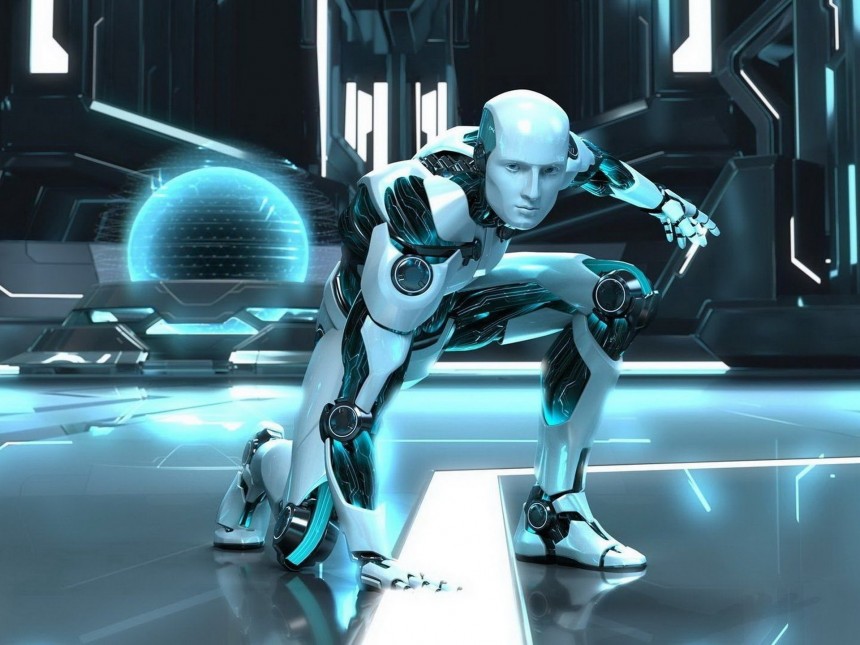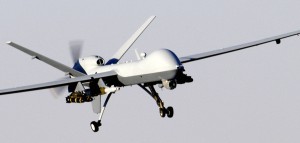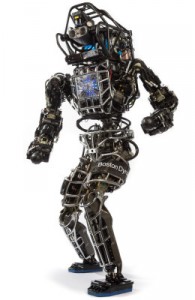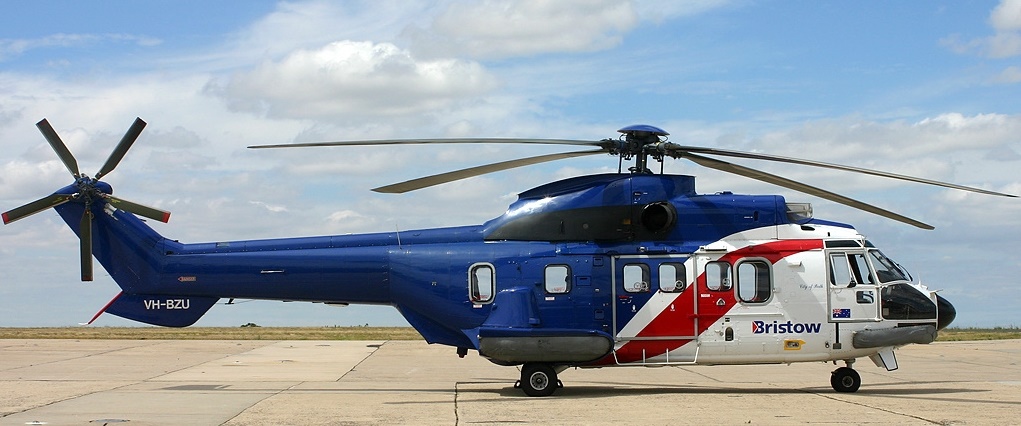From DaVinci to Google, Robotics Technology is on the Rise
Rise of Robotics
From Leonardo DaVinci to Google, astonishing command of robotics design and development such as Boston Dynamics’ humanoid robots and SpotMini may significantly altering the way we live, work, play, and fight. Far from the wide application of these inventions, the word “robot” comes from the word “robota”, meaning, in Czech and Polish, “labour, drudgery” so it may come as no surprise that you’ll find some of these robots can do your dishes. Among some of the most interesting robots to rise among these fascinating developments is Boston Dynamics’ Atlas, the agile anthropomorphic robot. Atlas is a high mobility, humanoid robot designed to negotiate outdoor, rough terrain. Atlas can walk bipedally leaving the upper limbs free to lift, carry, and manipulate the environment. In extremely challenging terrain, Atlas is strong and coordinated enough to climb using hands and feet, to pick its way through congested spaces. Many may not know this but Boston Dynamics is wholly-owned subsidiary of Google, Inc.
The team at AQT Solutions is intrigued by robotic inventions, including drones, and familiar with the work of some of our military and defense client’s training projects such as General Atomics’ MQ-9 Reaper drone, the very first hunter-killer UAV designed for long-endurance, high-altitude surveillance developed for the US Air Force.
So, what it is a humanoid robot? A humanoid robot is a robot with its body shape built to resemble that of the human body. A humanoid design might be for functional purposes, such as interacting with human tools and environments, for experimental purposes, such as the study of bipedal locomotion, or for other purposes. In general, humanoid robots have a torso, a head, two arms, and two legs, though some forms of humanoid robots may model only part of the body, for example, from the waist up. Some humanoid robots also have heads designed to replicate human facial features such as eyes and mouths. Androids are humanoid robots built to aesthetically resemble humans.
History of Robotics Development
Year – Development
c. 250 BC – The Lie Zi described an automaton.
c. 50 AD – Greek mathematician Hero of Alexandria described a machine to automatically pour wine for party guests.
1206 – Al-Jazari described a band made up of humanoid automata which, according to Charles B. Fowler, performed “more than fifty facial and body actions during each musical selection.”Al-Jazari also created hand washing automata with automatic humanoid servants, and an elephant clock incorporating an automatic humanoid mahout striking a cymbal on the half-hour. His programmable “castle clock” also featured five musician automata which automatically played music when moved by levers operated by a hidden camshaft attached to a water wheel.
1495 – Leonardo da Vinci designs a humanoid automaton that looks like an armored knight, known as Leonardo’s robot.
1738 – Jacques de Vaucanson builds The Flute Player, a life-size figure of a shepherd that could play twelve songs on the flute and The Tambourine Player that played a flute and a drum or tambourine.
1774 – Pierre Jacquet-Droz and his son Henri-Louis created the Draughtsman, the Musicienne and the Writer, a figure of a boy that could write messages up to 40 characters long.
1898 – Nikola Tesla publicly demonstrates his “automaton” technology by wirelessly controlling a model boat at the Electrical Exposition held at Madison Square Garden in New York City during the height of the Spanish–American War.
1921 – Czech writer Karel Čapek introduced the word “robot” in his play R.U.R. (Rossum’s Universal Robots). The word “robot” comes from the word “robota”, meaning, in Czech and Polish, “labour, drudgery.”
1927 – The Maschinenmensch (“machine-human”), a gynoid humanoid robot, also called “Parody”, “Futura”, “Robotrix”, or the “Maria impersonator” (played by German actress Brigitte Helm), perhaps the most memorable humanoid robot ever to appear on film, is depicted in Fritz Lang’s film Metropolis.
1941-42 – Isaac Asimov formulates the Three Laws of Robotics, used in his robot science fiction stories, and in the process of doing so, coins the word “robotics.”
1948 – Norbert Wiener formulates the principles of cybernetics, the basis of practical robotics.
1961 – George Devol – The first digitally operated and programmable non-humanoid robot, the Unimate, is installed on a General Motors assembly line to lift hot pieces of metal from a die casting machine and stack them. It was created by George Devol and constructed by Unimation, the first robot manufacturing company.
1969 – D.E. Whitney publishes his article “Resolved motion rate control of manipulators and human prosthesis”.
1970 – Zero Moment Point by Miomir Vukobratović has proposed Zero Moment Point, a theoretical model to explain biped locomotion.
1972 – First active anthropomorphic exoskeleton by Miomir Vukobratović and his associates at Mihajlo Pupin Institute build the first active anthropomorphic exoskeleton.
1973 – Wabot-1 – In Waseda University, in Tokyo, Wabot-1 is built. It was able to walk, to communicate with a person in Japanese and to measure distances and directions to the objects using external receptors, artificial ears and eyes, and an artificial mouth.[15]
1980 – MIT Leg Lab – Marc Raibert established the MIT Leg Lab, which is dedicated to studying legged locomotion and building dynamic legged robots.
1983 – Greenman – Using MB Associates arms, “Greenman” was developed by Space and Naval Warfare Systems Center, San Diego. It had an exoskeletal master controller with kinematic equivalency and spatial correspondence of the torso, arms, and head. Its vision system consisted of two 525-line video cameras each having a 35-degree field of view and video camera eyepiece monitors mounted in an aviator’s helmet.[17]
1984 – Wabot-2 – At Waseda University, the Wabot-2 is created, a musician humanoid robot able to communicate with a person, read a normal musical score with his eyes and play tunes of average difficulty on an electronic organ.[15]
1985 – WHL-11 – Developed by Hitachi Ltd, WHL-11 is a biped robot capable of static walking on a flat surface at 13 seconds per step and it can also turn.
1985 – WASUBOT is another musician robot from Waseda University. It performed a concerto with the NHK Symphony Orchestra at the opening ceremony of the International Science and Technology Exposition.
1986 – Honda developed seven biped robots which were designated E0 (Experimental Model 0) through E6. E0 was in 1986, E1 – E3 were done between 1987 and 1991, and E4 – E6 were done between 1991 and 1993.
1989 – Manny was a full-scale anthropomorphic robot with 42 degrees of freedom developed at Battelle’s Pacific Northwest Laboratories in Richland, Washington, for the US Army’s Dugway Proving Ground in Utah. It could not walk on its own but it could crawl, and had an artificial respiratory system to simulate breathing and sweating.
1990 – Tad McGeer showed that a biped mechanical structure with knees could walk passively down a sloping surface.
1993 – Honda developed P1 (Prototype Model 1) through P3, an evolution from E series, with upper limbs. Developed until 1997.
1995 – Hadaly was developed in Waseda University to study human-robot communication and has three subsystems: a head-eye subsystem, a voice control system for listening and speaking in Japanese, and a motion-control subsystem to use the arms to point toward campus destinations.
1995 – Wabian is a human-size biped walking robot from Waseda University.
1996 – Saika, a light-weight, human-size and low-cost humanoid robot, was developed at Tokyo University. Saika has a two-DOF neck, dual five-DOF upper arms, a torso and a head. Several types of hands and forearms are under development also. Developed until 1998.
1997 – Hadaly-2, developed at Waseda University, is a humanoid robot which realizes interactive communication with humans. It communicates not only informationally, but also physically.
2000 – Honda creates its 11th bipedal humanoid robot, able to run, ASIMO.
2001 – Sony unveils small humanoid entertainment robots, dubbed Sony Dream Robot (SDR). Renamed Qrio in 2003.
2001 – Fujitsu realized its first commercial humanoid robot named HOAP-1. Its successors HOAP-2 and HOAP-3 were announced in 2003 and 2005, respectively. HOAP is designed for a broad range of applications for R&D of robot technologies.
2002 – HRP-2, biped walking robot built by the Manufacturing Science and Technology Center (MSTC) in Tokyo.
2003 – JOHNNIE, an autonomous biped walking robot built at the Technical University of Munich. The main objective was to realize an anthropomorphic walking machine with a human-like, dynamically stable gait.
2003 – Actroid, a robot with realistic silicone “skin” developed by Osaka University in conjunction with Kokoro Company Ltd.
2004 – Persia, Iran’s first humanoid robot, was developed using realistic simulation by researchers of Isfahan University of Technology in conjunction with ISTT.
2004 – KHR-1, a programmable bipedal humanoid robot introduced in June 2004 by a Japanese company Kondo Kagaku.
2005 – The PKD Android, a conversational humanoid robot made in the likeness of science fiction novelist Philip K Dick, was developed as a collaboration between Hanson Robotics, the FedEx Institute of Technology, and the University of Memphis.
2005 – Wakamaru, a Japanese domestic robot made by Mitsubishi Heavy Industries, primarily intended to provide companionship to elderly and disabled people.
2005 – The Geminoid series is a series of ultra-realistic humanoid robots or Actroid developed by Hiroshi Ishiguro of ATR and Kokoro in Tokyo. The original one, Geminoid HI-1 was made at its image. Followed Geminoid-F in 2010 and Geminoid-DK in 2011.
2006 – Nao is a small open source programmable humanoid robot developed by Aldebaran Robotics, in France. Widely used by worldwide universities as a research platform and educational tool.
2006 – RoboTurk is designed and realized by Dr Davut Akdas and Dr Sabri Bicakci at Balikesir University. This Research Project Sponsored By The Scientific And Technological Research Council Of Turkey (TUBITAK) in 2006. RoboTurk is successor of biped robots named “Salford Lady” and “Gonzalez” at university of Salford in the UK. It is the first humanoid robot supported by Turkish Government.
2006 – REEM-A was the first fully autonomous European biped humanoid robot, designed to play chess with the Hydra Chess engine. The first robot developed by PAL Robotics, it was also used as a walking, manipulation, speech and vision development platform.
2006 – iCub, a biped humanoid open source robot for cognition research.
2006 – Mahru, a network-based biped humanoid robot developed in South Korea.
2007 – TOPIO, a ping pong playing robot developed by TOSY Robotics JSC.
2007 – Twendy-One, a robot developed by the WASEDA University Sugano Laboratory for home assistance services. It is not biped, as it uses an omni-directional mobile mechanism.
2008 – Justin, a humanoid robot developed by the German Aerospace Center (DLR).
2008 – KT-X, the first international humanoid robot developed as a collaboration between the five-time consecutive RoboCup champions, Team Osaka, and KumoTek Robotics.
2008 – Nexi, the first mobile, dexterous and social robot, makes its public debut as one of TIME magazine’s top inventions of the year.[36] The robot was built through a collaboration between the MIT Media Lab Personal Robots Group, UMass Amherst and Meka robotics.
2008 – Salvius, The first open source humanoid robot built in the United States is created.
2008 – REEM-B, the second biped humanoid robot developed by PAL Robotics. It has the ability to autonomously learn its environment using various sensors and carry 20% of its own weight.
2008 – Surena, This robot was introduced in December 13, 2008. It had a height of 165 centimetres and weight of 60 kilograms, and is able to speak according to predefined text. It also has remote control and tracking ability.
2009 – HRP-4C, a Japanese domestic robot made by National Institute of Advanced Industrial Science and Technology, shows human characteristics in addition to bipedal walking.
2009 – SURALP – Turkey’s first dynamically walking humanoid robot, SURALP, is developed by Sabanci University in conjunction with Tubitak.
2009 – Kobian, a robot developed by WASEDA University can walk, talk and mimic emotions.
2009 – DARwIn-OP, an open source robot developed by ROBOTIS in collaboration with Virginia Tech, Purdue University, and University of Pennsylvania. This project was supported and sponsored by NSF.
2010 – NASA and General Motors revealed Robonaut 2, a very advanced humanoid robot. It was part of the payload of Shuttle Discovery on the successful launch February 24, 2011. It is intended to do spacewalks for NASA.
2010 – Students at the University of Tehran, Iran unveil the Surena II. It was unveiled by President Mahmoud Ahmadinejad.
2010 – HRP-4C – Researchers at Japan’s National Institute of Advanced Industrial Science and Technology demonstrate their humanoid robot HRP-4C singing and dancing along with human dancers.
2010 – HRP-4 – In September the National Institute of Advanced Industrial Science and Technology also demonstrates the humanoid robot HRP-4. The HRP-4 resembles the HRP-4C in some regards but is called “athletic” and is not a gynoid.
2010 – REEM, a humanoid service robot with a wheeled mobile base. Developed by PAL Robotics, it can perform autonomous navigation in various surroundings and has voice and face recognition capabilities.
2011 – Robot Auriga was developed by Ali Özgün HIRLAK and Burak Özdemir in 2011 at University of Cukurova. Auriga is the first brain controlled robot, designed in Turkey. Auriga can service food and medicine to paralysed people by patient’s thoughts. EEG technology is adapted for manipulation of the robot. The project was supported by Turkish Government.
2011 – Honda – In November Honda unveiled its second generation Honda Asimo Robot. The all new Asimo is the first version of the robot with semi-autonomous capabilities.
2012 – Italian Institute of Technology – In April, the Advanced Robotics Department in Italian Institute of Technology released its first version of the COmpliant huMANoid robot COMAN which is designed for robust dynamic walking and balancing in rough terrain.
2013 – DARPA Robotics – On December 20–21, 2013 DARPA Robotics Challenge ranked the top 16 humanoid robots competing for the US $2 million cash prize. The leading team, SCHAFT, with 27 out of a possible score of 30 was bought by Google.[49] PAL Robotics launches REEM-C the first humanoid biped robot developed as a robotics research platform 100% ROS based.
2014 – Manav – India’s first 3D printed humanoid robot developed in the laboratory of A-SET Training and Research Institutes by Diwakar Vaish (head Robotics and Research, A-SET Training and Research Institutes).
2015 – Surena III, The third generation of Iranian humanoid robot dubbed ‘Surena’ with a height of 190 cm and a weight of 98 kg enjoys remarkable improvements over its previous model.
2016 – OceanOne, developed by a team at Stanford University, led by computer science professor Oussama Khatiband, completes its first mission, diving for treasure in a shipwreck off the coast of France, at a depth of 100 meters. The robot is controlled remotely, has haptic sensors in its hands, and artificial intelligence capabilities.
Sources: Wikipedia Commons; The Daily Conversation (YouTube Channel)
















